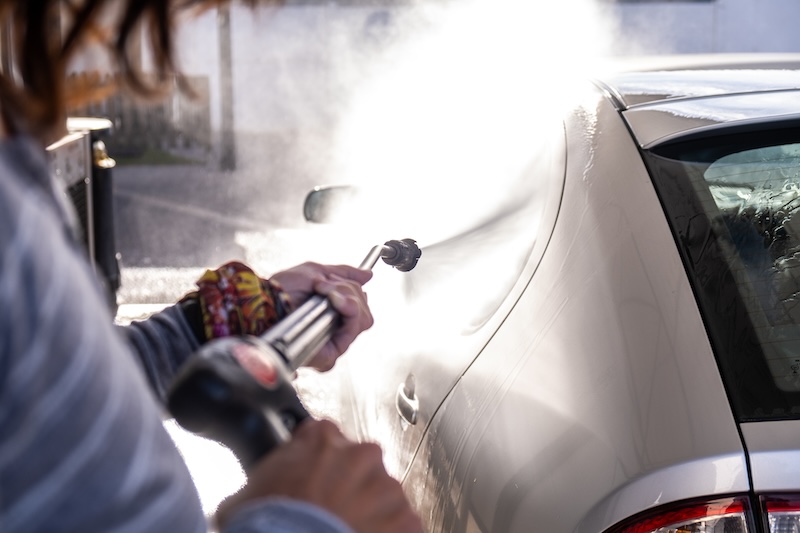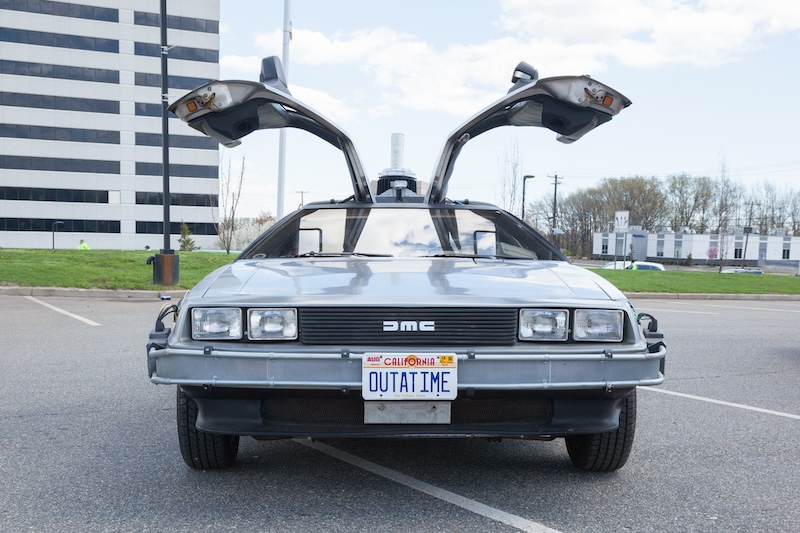DIY tips for looking after your car

Regularly washing your can help prevent rusting.
Knowing how to look after your car can save you time and money. Here’s some of our tips to help you avoid unnecessary trips to a garage.
Tyres
As the point of contact between your and the road, tyres are one of the most important parts of your car, checking if they’re in good condition and how to change them can be really valuable skills.
How to check the condition of your tyres
Your tyre tread must be a minimum depth of 1.6mm to be road legal. The easiest way to do this is with the outer band of a 20p coin which is around 2mm, making it the perfect measuring stick to test the depth of your tyre tread.
Just put the 20p in your tyre tread and if you can still see the outer band then the tread is too thin, and you need to replace your tyres as soon as possible.
RAC have made a video showing exactly how to do this:
How to change a tyre
Changing a flat tyre yourself can save a lot of unnecessary waiting around at the side of the road.
Here’s how to do it:
- Use the jack to lift your car from underneath
- Locate your locking wheel nut and use it to unscrew the tyre nuts
- Take off the wheel and replace with your spare or space saver tyre
- Secure tyre using locking wheel nuts
- Lower the jack and off you go (albeit at less than 50mph if you’re on a space saver)
Bulbs
Having lights on your car that don’t work can be a very serious issue. Not only are you more likely to have an accident, you will also fail your MOT if your lights are broken.
Getting someone to flick all your lights on and off while you walk around your vehicle is the best and easiest way to check all your lights yourself.
If you find any that are broken or noticeably dimmer than the rest, you should definitely change them. Your vehicle’s manual will have instructions on how to do it, but it’s a fairly simple process:
- Open the bonnet to find the back of the light housing (for rear lights you’ll have to open the boot)
- Remove any cover
- Remove the blown bulb – you may need to release spring levers or twist out the connector to disconnect the electrical connectors
- Using gloves, put the new bulb in place of the one you’ve just taken out
- Fasten any cover back in place
- Check the replacement bulb is working
Wash your car
It may not seem like a maintenance task, but washing your car is integral to the condition of your car. Besides just not being dirty, washing your car on a regular basis helps keep the paint in good shape and can also prevent rusting.
You’ll be able to find specialised products and equipment but one of the best things to use that may already be in your home is baby shampoo.
Baby shampoo is gentle enough to use on your car without stripping the paint and other protective layers. Most people use dish soap as a first choice, but as that’s formulated to strip grease from dishes, it can also strip the wax coating from your car.
Fluid levels
Checking and topping up your fluid levels is one of the easiest DIY car maintenance tasks.
Oil
Oil is what helps your engine run smoothly by lubricating all the moving parts and preventing friction damage.
Driving with low oil levels, or dirty oil, can significantly reduce the life of your vehicle. But, checking and topping up your oil level is very easy.
The oil dipstick, which should be either red, orange or yellow, will be located at either the front or back of your engine depending on the make and model of the car.
The very end of the dipstick will be coated in oil, and this will tell you your oil level. There will be minimum and maximum marks on the end, indicating the minimum and maximum level of oil you should have in your car.
Top tip: You’ll need to turn the engine off and clean the dipstick before dipping it to get an accurate and level reading.
Ideally, your oil level should be at least 75% but as long as the level is above minimum, you should be fine. However, if your oil level is hovering around minimum, it’s recommended you top it up ASAP.
Engine coolant
Engine coolant, as the name suggests, helps keep your engine from overheating.
Running an engine produces a lot of energy which is either converted into power (to move the vehicle forwards), or heat. Some of the heat is expelled through the exhaust, but the rest stays in the engine.
The water-based coolant flows around the engine and absorbs the heat. The liquid is then taken to the vehicle’s radiator where it’s cooled by airflow as the vehicle moves.
If you don’t have enough coolant, your engine could overheat which can cause a lot of damage.
Here’s how to check and top up your engine coolant levels:
Top tip: Before checking your coolant level make sure the engine has cooled completely, ideally overnight.
Check your vehicle manual for the location of your coolant cap, as it varies from car to car.
On the tank underneath, you’ll see minimum and maximum marks, and your coolant level should be in between these marks. The coolant itself should be coloured but clear.
If the liquid looks murky or has bits floating in it, flush your cooling system and add new coolant. If the problem persists, you may have to take your vehicle to a specialist.
You should only top up your coolant tank with water in an emergency. Too much water will dilute the coolant and raise the freezing temperature of the water, which isn’t a good thing, especially during winter.
Windscreen washer fluid
Windscreen washer fluid does exactly what the name suggests. The liquid sprays onto the windscreen before wipers help wash away all the dirt and grime. Topping the fluid up is fairly simple.
Ideally, you’ll use a proper windscreen washer fluid, but there’s nothing wrong with a good home recipe.
Top tip: Don’t use water by itself. It’s likely to just smear dirt and grime across your windscreen. Plus, it will freeze in lower temperatures and could cause other visibility and safety issues.
Some safer alternatives:
- White vinegar: A well-known substitute glass cleaner that will not freeze in cold conditions. Make sure you dilute the vinegar with water to make sure you don’t destroy the paint layer on your car.
- Soap-alcohol: Mix a gallon of water with a cup of vodka or rubbing alcohol. Shake the mixture and add a spoonful of mild dish soap and then shake again. If it’s especially cold, consider adding another cup of alcohol.
Wiper blades
Checking your wiper blades for damage is easy, and all you need to replace them is a simple screwdriver.
Here is RAC’s advice on how to check the condition of your wiper blades:
If you want to know more, check out our guide on winter car checks.


